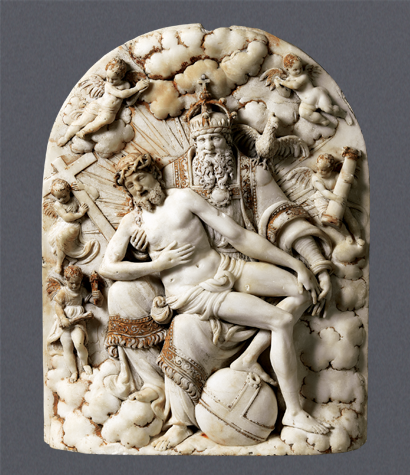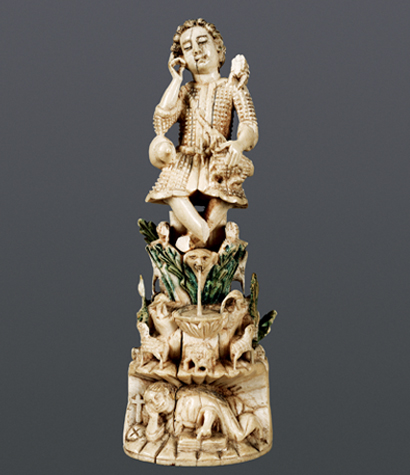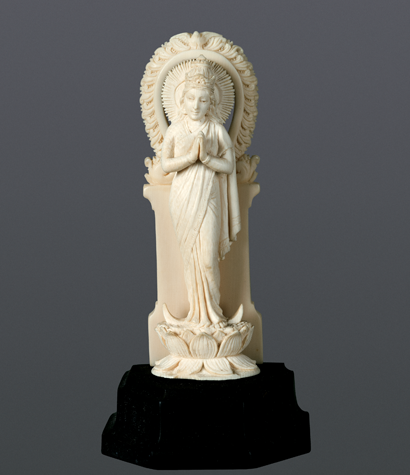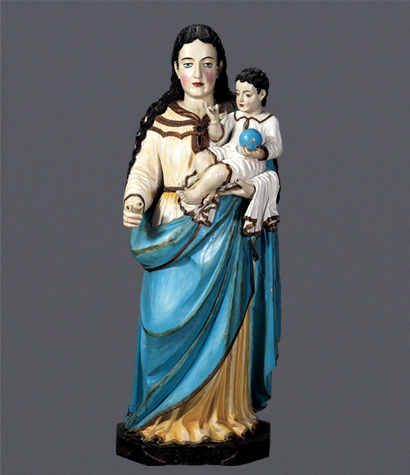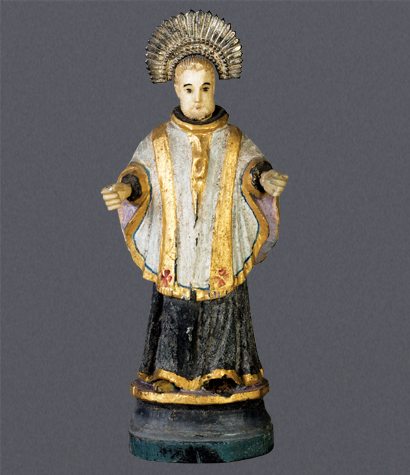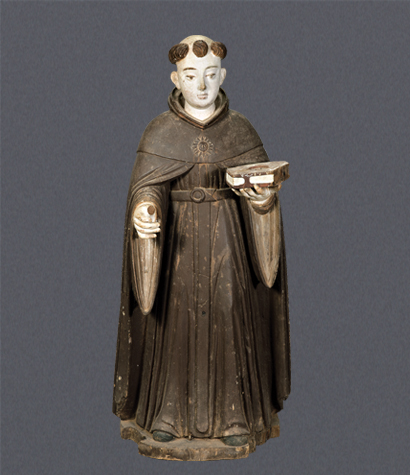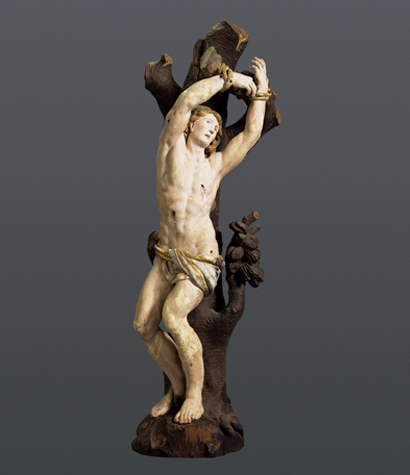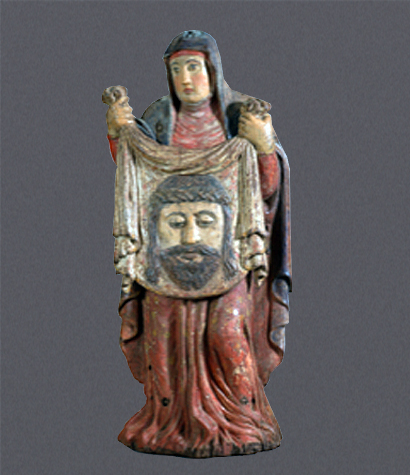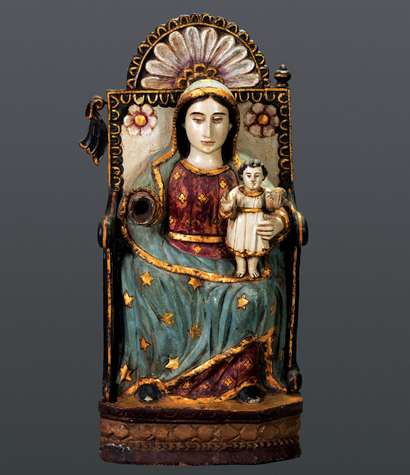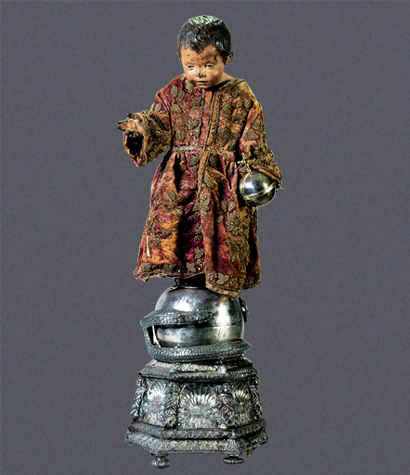
This painted silver statue of the Infant Jesus as Saviour of the World shows him with the customary right hand raised in blessing, and the left holding the terrestrial orb bearing a cross. While the Infant displays European attributes, the base reveals another hand at work, whose influences are Indian. The work of two different artists, the statue is nonetheless a harmonious blend of Indo-Portuguese elements.
The Infant is distinctly European in origin, as seen in features, complexion, and in the possible use of silver-plated tin. The Indian influence is visible in the image’s base, a silver-clad wooden globe resting on a six-sided stand with gored, flattened feet. It is here, perhaps given the stance and mien of the Infant Jesus, that the Indian silversmith chose to interpret his work in the light of a popular story from Hindu mythology, of the god Krishna as a child. Krishna subdues the serpent Kaliya by assuming the weight of the world and beating him down with his feet, banishing Kaliya to the nether world to save his people. Intricate silverwork is visible in the overlapping scales of the naga or sacred serpent, a semi-divine being popular in Indian art, here a water deity, as water-leaf and scallop motifs reveal. The naga has a semi-human face, with nose, red-stone eyes, open mouth, its head topped with tiny horns. The nagas around the base-support have arms that coil around their bodies.
While it is usual to show the Infant Jesus unclothed, here he wears a splendid gold-embroidered velvet gown. The thread-work is of the Mughal Zardozi variety, with its Tree of Life, vegetal and floral motifs, perhaps Deccani in influence or origin.
NOTES
The cost and date (1748) of the base are mentioned in Nuno Vassalo e Silva’s “The Art of Silver in the Jesuit Houses of Goa”.
REFERENCES
Silva, Nuno Vassalo e, “A Arte da Prata nas Casas Jesuítas de Goa (The Art of Silver in the Jesuit Houses of Goa),” A Companhia de Jesus e a Missionação no Oriente (Actas do Colóquio/Records of Colloquium), Lisbon, Fundaçao Oriente, Brotéria, 1997.
PUBLICATIONS
Museum of Christian Art, Convent of Santa Monica, Goa, India, Calouste Gulbenkian Foundation, Lisbon, 2011.

